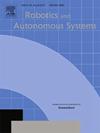Sli-EfficientDet: A slimming and efficient water surface object detection model
IF 4.3
2区 计算机科学
Q1 AUTOMATION & CONTROL SYSTEMS
引用次数: 0
Abstract
In the field of water surface object detection, deep learning technology has become a mainstream method. Unmanned Surface Vehicles (USVs), which perform precise sensing and measurement tasks on water surfaces, particularly benefit from these advancements. However, for hardware resource-constrained USVs, current detection models still struggle to find a balance between being lightweight and maintaining accuracy. To address this challenge, we first reduce parameters by clipping channels in the backbone network through a dependency graph based pruning method. Additionally, we introduce the Simple Attention Module (SimAM) into the backbone network to derive excellent three-dimensional attention weights without adding additional parameters during computation. Furthermore, we utilize the ghost module to reconstruct the feature fusion network by using simple linear operations to process feature maps, which enhances the network performance in feature extraction while further compressing the model. Experiments show that our model achieves a 15.56 % improvement in mean Average Precision (mAP) while reducing the count of model parameters by 55 % compared to the original EfficientDet-D0 model, and balancing lightweight and accuracy compared to the majority of current models.
slii - efficientdet:一种精简高效的水面目标检测模型
在水面目标检测领域,深度学习技术已成为主流方法。在水面上执行精确传感和测量任务的无人水面车辆(usv)尤其受益于这些进步。然而,对于硬件资源受限的usv,目前的检测模型仍然难以在轻量级和保持准确性之间找到平衡。为了解决这一挑战,我们首先通过基于依赖图的修剪方法,通过剪切骨干网络中的通道来减少参数。此外,我们在骨干网络中引入了简单注意力模块(SimAM),在计算过程中无需添加额外参数即可获得出色的三维注意力权重。此外,我们利用鬼影模块重构特征融合网络,采用简单的线性运算对特征映射进行处理,在进一步压缩模型的同时提高了网络在特征提取方面的性能。实验表明,我们的模型与原来的EfficientDet-D0模型相比,平均平均精度(mAP)提高了15.56%,模型参数的数量减少了55%,与大多数现有模型相比,实现了轻量化和准确性的平衡。
本文章由计算机程序翻译,如有差异,请以英文原文为准。
求助全文
约1分钟内获得全文
求助全文
来源期刊

Robotics and Autonomous Systems
工程技术-机器人学
CiteScore
9.00
自引率
7.00%
发文量
164
审稿时长
4.5 months
期刊介绍:
Robotics and Autonomous Systems will carry articles describing fundamental developments in the field of robotics, with special emphasis on autonomous systems. An important goal of this journal is to extend the state of the art in both symbolic and sensory based robot control and learning in the context of autonomous systems.
Robotics and Autonomous Systems will carry articles on the theoretical, computational and experimental aspects of autonomous systems, or modules of such systems.
 求助内容:
求助内容: 应助结果提醒方式:
应助结果提醒方式:


